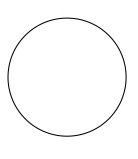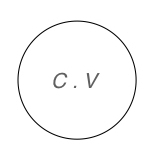Sarah Pettitt is a British artist whose practice explores the absent body through anti-monumental painting. With an MA from the Slade School of Fine Art and research developed through the project "Tyranny of Surface" at UCL, she creates multi-dimensional works influenced by diverse sources including medieval portable artworks, the Supports/Surfaces movement, and Indian tantric paintings. Working primarily with blue pigments, Pettitt incorporates handmade and manufactured elements that reframe fragmented thinking as generative forces, challenging traditional art narratives while examining how overlooked emotions gain significance through innovative approaches to form, colour, and materiality.
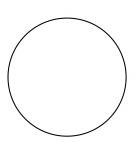
sarahpettittstudio(@)gmail.com
@sarah_pettitt_![]()
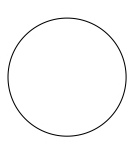
'Sarah Pettitt's work takes us to a place of subtle permanence. A place that escapes definitions of sculpture or painting, performance or installation. A place so personal we experience an emotive quality through her often found and mended works.'
— Jason Andrew, Founding Director, Norte Maar
Mirrored in Pettitt’s work is the idea that love, pain, and beauty are intrinsically connected.
- Doug Welsh
'Through her work Sarah Pettitt demonstrates her innate ability to listen to materials; this sagacity could be described as empathy. The logic is towards Freud, the palette towards the flesh but her touch is onomatopoeic. Her works take us to the dead relics of the saints and transport us back to the stuff of our own violations and hesitations with a thud of hurt and beauty. It’s not the visceral entrails of our philosophy, but the awkward and unwieldy situations when we dared to reach out; here they are excavated, resuscitated, exposed. Pettitt’s work thus becomes the wincing, flinching gesture re-imagined, the viscera of felt experience as if caught at birth, raw, leaking, unnamed, unmodified and universal.'
— Sheenagh Geoghegan
Sarah Pettitt’s tenderly provisional constructions make understated references to people and place through association and material, as well as to art history: the nails derive from crucifixions; the use of thread from Fred Sandback; hinged elements from triptychs - the Isenheim Altarpiece made a big impact on her as a teenager. And the backs of canvases and the reconstituted frames can fascinate her as much as the primary aspect of some works. She likes to make constituent elements at different times, finding that suits her ‘fractured way of thinking’ to arrive at ‘a medley of everything that goes on’. Pettitt uses colour to elevate and unify the parts in the manner of Louise Nevelson, citing how she always painted objects before assembling them – Pettitt’s current preference is for blue, explaining that she is ‘interested in material hierarchy and ultramarine as a contemporary synthetic of a historically charged pigment’. That said, she’s dipping into history, not seeking a chronology; and not aiming at a game of references so much as an object with its own logic – that ‘contains itself’ in a way that provides a starting point for viewers. Their unassertive presence is consistent with most materials being found or coming from left-overs, and there often seems to be something missing. The pocket-bearing ‘Compatible’ and ‘Klass’ could feasibly act as bird boxes, and Pettitt likes such quotidian interpretations. ‘Quiet Votive’ looks as if a bell can be pulled, but remains a silent portal to whatever is to be worshipped. Pettitt often attaches a ‘pin’ of scrap material, as here – and likes to provide a box of such pins as a gift for people to take at exhibitions. ‘Unbound etc’ increases the scale through an illogical frame: the blue polystyrene evokes Klein’s sponges as well as an eidetic brain. The architectural form of ‘Blue Lintel’ holds sea grass – which is drought-resistant and planted to prevent soil erosion, invoking environmental fragility.
— Paul Carey Kent
'That's exactly how my back feels
when I wake up in the morning.' — G. Rosemary
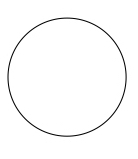
I'm looking at the web site now. I'm very very into the painted red dashed stick, measuring stick, like the ones that measure the variation of depth in rivers. Makes me think your of your cellar flooding, something there, gone or expected... somewhere between flooding and where the work is floated up to. You could do a whole show of those and just those. It's also fun in relation to the lipstick/matchstick and blooded spike, sort of works with that idea of how far something is dipped or spiked into something, like depth measured by how wet or muddy a stick gets. I like this depth thing, very into this depth thing and tentative, simplified/ child/like testing. It makes me think of a moomin book that I cant remember the name of but where the dad goes out to do his various tests each morning, measuring how far the tide has come up etc. Simple and child-like with a threat also, a body trying to comprehend outside forces. I'm on my third cup of coffee. I also like the continuation of the wired sticks, the white with the black stone is very nice, plus the new one with the Judas bag.
— R.R
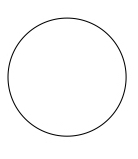
I’ve recently got to know the work of Sarah Pettitt; it’s quirky, humorous and visually playful. Seeming nods to antiquity are many, yet this wide range of references seems more material or visual than a code leading us to meaning. Any message stirs from Sarah’s playful materiality, the space it occupies, and our fundamental response to it. Sarah manages to warp fabric, wood, sand, paint and variety of other materials into a sensitively considered arrangement of globs, drawings, cutouts, wrappings, and numerous other forms. The natural colours of her chosen materials, such as linen or clay, are gently complimented by earths and pastels, or accentuated against dashes of stark colour. It is in the tension created by this delicate balance between bold forms, the softness of her materiality, and her acutely attuned aesthetic awareness that Sarah’s work has the power to intrigue and captivate.
— Nicholas John Jones, Director, Praksis Oslo
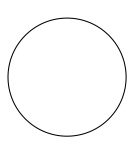
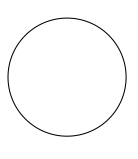
Six Short Stories
Mark my words; a mark made may hold all manner of consequences.
Amidst the forms invested with a bodily weight it was the tongues that were the most jarring, for words would not come easy. Protruding from the walls and slumped on spare surfaces, these lolling lumps dared the wordsmith to speak and yet he was dumbstruck. Lopsided, they mouthed of a pre-lingual time - capable only of an incomprehensible babble. One would have to be forgiven for wanting to taste the surface of such a thing – for the desire to reciprocate their visceral nature was strong. With his neck craned towards the object and his tongue outstretched, he wondered if perhaps Sarah Pettitt had foreseen the strange urges that would unexpectedly overcome him. He was truly glad to hear from others that they felt the same and that they too wanted to lick the work – if he had been the only one he could never have divulged that fact. Faced with these totems and fetishes, a bodily response was all that could be mustered. Born from the studio but more closely tied to the cave, the primordial essence of the painterly eclipsed the need for language. Ultimately the tongue would always have the last word.
— A. Barrett
©2025 Sarah PettittBuilt with Indexhibit
